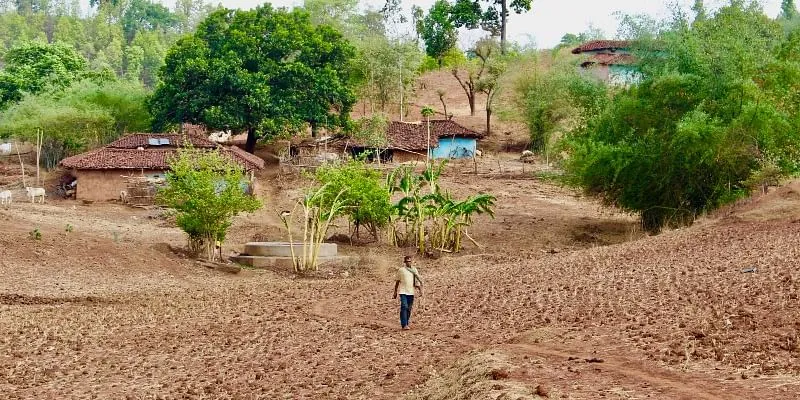The UN Decade on Ecosystem Restoration aims to prevent, halt and reverse the degradation of ecosystems worldwide.
The decade is envisioned to offer an unparalleled opportunity to fight climate change, create jobs, ensure food security, and achieve the Sustainable Development Goals (SDGs).
This World Environment Day marked the beginning of the UN Decade on Ecosystem Restoration that aims to prevent, halt and reverse the degradation of ecosystems worldwide. This ties in with several massive global initiatives toward restoration including the Bonn Challenge commitment to restore 350 million hectares, the Land Degradation Neutrality (LDN) target, and other private sector and civil society led campaigns such as the World Economic Forum’s one trillion trees and one tree planted. Adopting a holistic approach, the decade calls for not only the ‘recovery of ecosystems that have been degraded or destroyed’ but also ‘conserving ecosystems that are still intact’. The decade is envisioned to offer an unparalleled opportunity to fight climate change, create jobs, ensure food security, and achieve the Sustainable Development Goals (SDGs).

Trees in mosaic restoration can support local people by improving soil and water quality, provisioning fuelwood and fodder, creating jobs, improving livelihoods and supporting food security
PC: Natasha Ferrari
For India, the UN Decade on Ecosystem Restoration provides added focus on achieving existing international commitments and domestic targets. This includes India’s commitment to restore a combined 26 million hectares under the Bonn Challenge and LDN, the nationally determined contribution goal to sequester additional 2.5 to 3 gigaton CO2 equivalent by 2030 through improved forest and tree cover, the National Mission for a Green India, the National Mission for Sustainable Agriculture and its sub-mission on agroforestry, and other schemes/programmes.
As India embarks on the UN Decade on Ecosystem Restoration, it is important to ensure that critical ecological and social principles are engrained in restoration policies, programmes, and campaigns.
More than just afforestation
The past few years have witnessed a growing number of tree plantation schemes at the national and state level such as the Mission Plantation in Maharashtra, Telanganaku Haritha Haram, and other CSO/private sector initiating campaigns to plant trees.
The emphasis of tree planting has masked the importance of conserving existing intact and fragile ecosystems such as dense natural forests, grasslands, naturally rocky areas and scrublands, deserts, and many more. Many times, tree plantation schemes have threatened natural ecosystems and prioritised commercial tree species over native trees.
The UN Decade on Ecosystem Restoration highlights the need for conservation to create resilient ecosystems with richer biodiversity and greater benefits. Adopting a landscape approach to scope, plan, implement, and finance restoration can help recognise the interactions between diverse ecosystems, people, and multiple land uses and focus on addressing environmental and socio-economic problems jointly.
Reorienting or shifting objectives and incentives offered under several existing restoration related schemes, missions, policies and programmes can ensure ecologically appropriate interventions are adopted in India’s landscapes.
Mosaic restoration for people and environment
Expanding trees outside of forests in a mosaic of ecologically appropriate land uses such as farmlands, built-up areas, cities, etc, collectively referred to as ‘mosaic restoration’, can lead to multiple benefits. In India, where land is under immense pressure due to competing land use, mosaic restoration offers an opportunity to improve tree cover that can help achieve international and domestic restoration targets. India has immense opportunity for mosaic restoration.
The India Restoration Opportunities Atlas identifies over 50 million hectares of opportunity for mosaic restoration. A majority of these areas is rain-fed farmlands where tree-based interventions such as trees on boundaries, agri-horti-forestry (wadi), fruit orchards, farm forestry, silvopasture, and linear plantations along canals, riverbanks, roads, etc, can be implemented. The tree cover in mosaic areas can have a wide range, with 60-100 trees per hectare or 20 percent tree cover being a common practice in agroforestry.
Trees in mosaic restoration can support local people by improving soil and water quality, provisioning fuelwood and fodder, creating jobs, improving livelihoods and supporting food security. Achieving these benefits, however, requires planning that considers people and landscapes together.
With people as the primary implementers and beneficiaries of restoration, considerations around the social landscapes, local challenges, and needs become critical for planning appropriate interventions.
The UN Decade on Ecosystem Restoration provides a unique opportunity for India to conserve and protect our environment and improve the well-being of nearly 700 million people in rural India who are dependent on land for their sustenance. Inclusive planning of interventions that is cognisant of complex people-environment relationships can deliver sustainable growth for the country.
Views are personal.
Edited by Diya Koshy George







